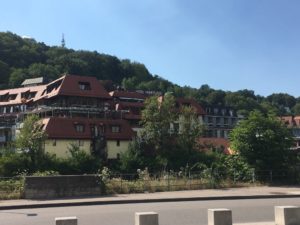Before living in the Schwäbisch Hall, I never knew salt could be so important! Schwäbisch Hall is often referred to as “die Stadt des Salzes” or “the City of Salt.” In fact, in old German the word “Hall” means salt! Salt has been critical to the development of Schwäbisch Hall for the past 2,000 years. Salt was the “white gold” of the Middle Ages and Schwäbisch Hall’s easy access to a nearby salt spring allowed it to become a wealthy, free imperial city during the Middle Ages. Now, most of the town’s traditional holidays reflect the importance of salt to the community!
Kuchen und Brunnenfest: The Chicken Saves the Town!
Legend has it that without the cockcrow of a chicken, the town of Schwäbisch Hall would not exist. In 1316, the town mill unexpectedly caught on fire. But thanks to cockcrow of a chicken trying to escape the burning mill, the saltstimmers nearby were able to immediately take action to save the mill and Schwäbisch Hall. Out of gratitude for their courageous acts, it is said that the miller baked the saltstimmers a 100 pound cake. The saltstimmers decorated the cake with garland and carried it to the fountains of Schwäbisch Hall to dance and sing traditional songs around them. This was especially significant because all the fountains in Schwäbisch Hall were, and still are, fed by salt water.
Since 1785, more than 500 people participate in the annual reenactment of this story on Pentecost. This reenactment is called “Kuchen und Brunnenfest” or “Cakes and Fountains Festival.”
The following are photos of the festival provided by my teacher Ulli Blogas at Goethe Institute:
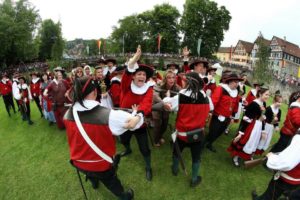
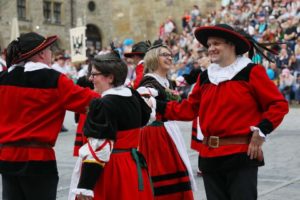
If are interested in seeing a video of this historic festival, please click on the link below. This video was made by a Schwäbisch Hall Unicorn football player from Portland, Oregon, of whom I had the opportunity to meet at Goethe.
https://www.youtube.com/watch?v=3CjqvmiqWjA
After the historic reenactment, visitors enjoy the festival’s amusement park, city tours, exhibitions, and live music.
Salztage
On October 14th, Schwäbisch Hall celebrates salt! This day is called “Salztage” or “Day of Salt” and offers a live demonstration of how salt was produced by the Celts in Schwäbisch Hall during the Middle Ages and of course, lots of food and drinks.
During the Middle Ages, salt water was drawn from Haalbrunnen spring on Haalplatz (Salt Square) in town and then transported to a mill nearby, such as the outdoor mill pictured above. The salt water was then boiled in iron pans until most of the water had evaporated, leaving the salt behind.
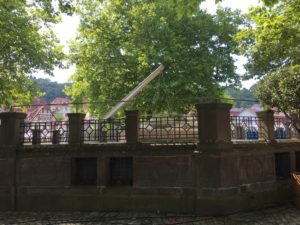
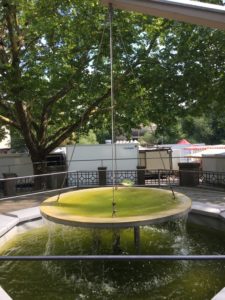
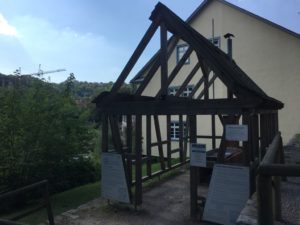
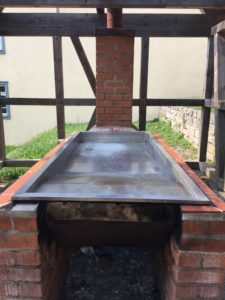
This salt was then sold in large markets in Speyer, Germany; Strasbourg, France; and Basel, Switzerland for great profits. In 1924, salt production in Schwäbisch Hall stopped as the town transitioned into a salt spa and resort town.
